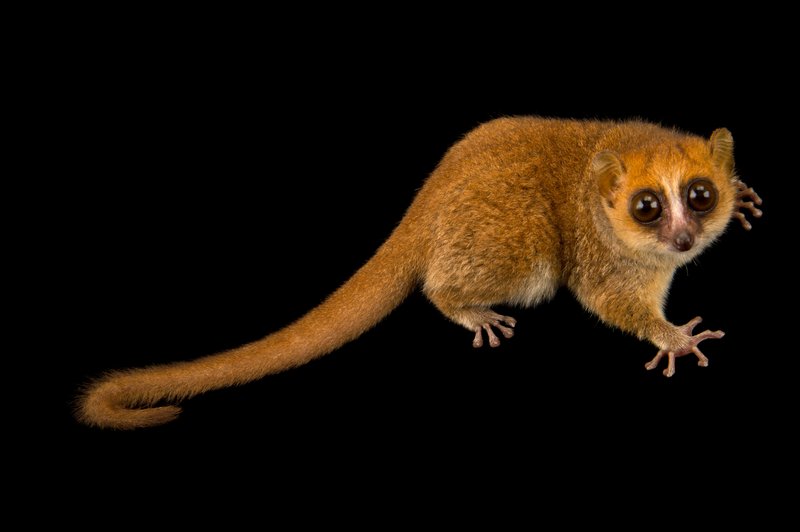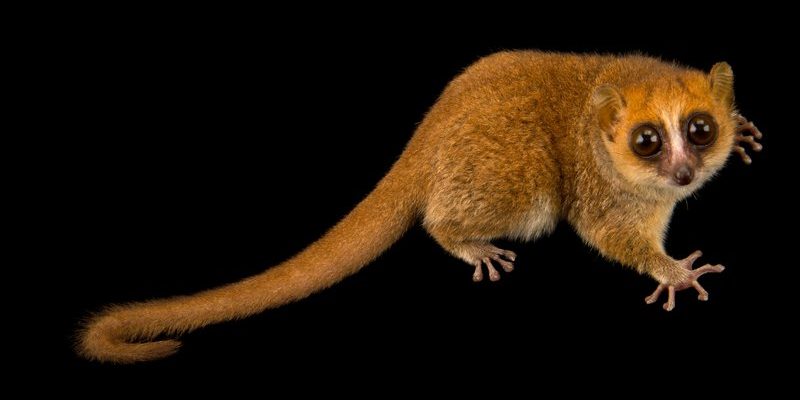
Imagine a creature that looks like a cross between a squirrel and a tiny monkey. That’s the Mouse Lemur for you! These adorable little primates are not just cute; they’re also fascinating in their behavior and biology. Native to the lush forests of Madagascar, Mouse Lemurs are among the world’s smallest primates, and they pack a lot of personality into their tiny frames.
In this article, we’ll dive into the captivating world of Mouse Lemurs, exploring everything from their habitat to their diet, and even their quirky behaviors. Whether you’re a wildlife enthusiast or just curious, you’re in for a treat as we uncover the secrets of these incredible creatures.
What is a Mouse Lemur?
Mouse Lemurs belong to the family Cheirogaleidae, and they are primarily found in Madagascar, one of the richest biodiversity hotspots on the planet. These little primates are nocturnal, meaning they come alive at night, making them a bit elusive during the day. When you think of size, imagine something about the length of your hand—most Mouse Lemurs measure around 12 to 14 inches when fully grown, including their long tail!
With big eyes that help them see in the dark, their fur can range from brown to gray. The Mouse Lemur’s large eyes and small noses give them an almost cartoonish appearance, contributing to their charm. They are social animals, often living in small groups, which helps them fend off predators and search for food more efficiently.
Physical Characteristics
Mouse Lemurs are tiny, but their physical features are remarkable. Around the size of a computer mouse, they can weigh anywhere from 1 to 3 ounces. Their small size is an evolutionary advantage, allowing them to navigate through the dense branches of their forest habitats with ease. They have long, slender limbs that help them leap between trees, which is essential for both foraging and escaping from threats.
One of the most distinguishing features of Mouse Lemurs is their eyes. Their large, round eyes aren’t just for show; they are specially adapted to their nocturnal lifestyle. This means they can detect light in very low conditions, which is crucial for hunting insects and fruits when the sun goes down. The fur is soft and dense, providing warmth during cool nights and camouflage against predators.
Habitat of the Mouse Lemur
Mouse Lemurs thrive in the tropical and subtropical forests of Madagascar. They particularly favor dense rainforests and can be found in both primary and secondary growth forests. Their habitat is crucial for their survival, providing food and shelter. The tall trees give them space to move around, gather food, and escape potential threats.
However, the habitat of the Mouse Lemur is under threat. Deforestation, driven by agriculture, logging, and human settlement, is rapidly reducing their living space. Conservation efforts are critical to protect these unique animals and their environment. Organizations are working to preserve remaining forest areas and educate local communities about the importance of these tiny primates.
Diet and Feeding Habits
You might think that a creature this small would have an equally small appetite, but that’s not the case! Mouse Lemurs are omnivorous, meaning they eat a variety of foods. Their diet consists mainly of fruits, insects, and flowers. On a typical night, they forage for ripe fruits or hunt for insects, which provide them with essential nutrients and energy.
In the wild, they will often rely on the fruiting patterns of the trees in their habitat. When the trees bear fruit, the Mouse Lemurs gather in groups to take advantage of the food source. This social foraging behavior not only helps them find food but also creates stronger bonds within their groups. They use their sharp sense of smell to identify ripe fruit and their nimble fingers to pick it from branches.
| Characteristic | Detail |
| Size | 12 to 14 inches (including tail) |
| Weight | 1 to 3 ounces |
| Habitat | Tropical rainforests of Madagascar |
| Diet | Omnivorous; primarily fruits and insects |
| Lifespan | About 8 to 10 years in the wild |
Behavior and Social Structure
Mouse Lemurs are fascinating not just for their looks but also for their social behavior. They are generally social animals and often live in groups called troops, which can consist of up to 15 individuals. These groups are typically led by a dominant female. Within the troop, you’ll find strong social bonds that include grooming and playing, which help maintain harmony.
During their nightly activities, Mouse Lemurs are quite vocal. They communicate using a range of sounds—from chirps to whistles. These vocalizations help them stay in touch with each other while they forage in the dark. When they sense danger, they can emit a loud warning call, alerting the rest of the group to possible threats.
When it comes to their mating habits, Mouse Lemurs are seasonal breeders. Mating usually occurs during the short wet season, leading to the birth of young after a gestation period of about 60 days. The baby Mouse Lemurs are born hairless and blind, relying completely on their mothers during the vulnerable early stages of life.
Conservation Status
Unfortunately, Mouse Lemurs face numerous challenges in the wild. Due to habitat destruction, climate change, and hunting, their populations are declining. The International Union for Conservation of Nature (IUCN) lists several species of Mouse Lemurs as endangered. Conservation efforts are underway to help protect these unique creatures and their forest homes.
Organizations are working to promote sustainable practices within local communities that depend on forest resources. By educating people about the importance of preserving the Mouse Lemur’s habitat, we can help secure a future for these enchanting primates. Sustainable tourism can also play a role, as it encourages people to appreciate and protect rather than exploit the natural environment.
Fun Facts about Mouse Lemurs
- Mouse Lemurs are so small that they can fit comfortably in the palm of your hand!
- They have a unique pattern of climbing—using a combination of leaping and climbing to navigate their forest homes.
- Some species of Mouse Lemurs can leap up to 3 meters in a single bound!
- Their big eyes not only help them see at night but also have a reflective layer that enhances their night vision.
FAQ
What is the lifespan of a Mouse Lemur?
In the wild, a Mouse Lemur typically lives about 8 to 10 years. However, in captivity where they have fewer threats and receive regular food and medical care, they can live several years longer. The conditions they live in can significantly influence their overall health and longevity.
Are Mouse Lemurs endangered?
Yes, many species of Mouse Lemurs are considered endangered due to habitat loss from deforestation, climate change, and hunting. Conservation efforts are in place to help protect these animals and their habitats, but ongoing efforts are crucial to ensure their survival in the wild.
What do Mouse Lemurs eat?
Mouse Lemurs are omnivores, which means they have a varied diet. They primarily eat fruits, insects, and flowers. Their dietary flexibility allows them to adapt to different food sources based on availability in their forest habitats.
How do Mouse Lemurs communicate?
Mouse Lemurs are quite vocal and use various sounds to communicate with each other. They chirp, whistle, and make other noises to convey messages, whether it’s to call others in their group or alert them of danger. Effective communication plays a vital role in their social structure.
Do Mouse Lemurs have any predators?
Yes, Mouse Lemurs face threats from several predators in their natural habitat. Birds of prey, snakes, and larger mammals can pose a danger to these small primates. Their ability to leap between trees and stay alert is crucial for avoiding these predators.
How do you tell different species of Mouse Lemurs apart?
Though all Mouse Lemurs share certain characteristics, they can often be differentiated by their size, fur coloration, and habitat preferences. Specific physical traits, like the patterns on their fur or the size of their eyes, can also help identify different species.
Can Mouse Lemurs be kept as pets?
While Mouse Lemurs may seem like adorable pets, they are wild animals with specialized care needs that are difficult to meet in a home environment. Additionally, keeping them as pets can lead to ethical and legal issues. It’s best to admire them in their natural habitat or through responsible sanctuary programs.
How do I help protect Mouse Lemurs?
You can help protect Mouse Lemurs by supporting conservation organizations that focus on habitat preservation and educating others about the importance of these amazing creatures. Reducing your carbon footprint and encouraging sustainable practices in your own life can also contribute to protecting their environment.
Are Mouse Lemurs social animals?
Yes, Mouse Lemurs are social creatures that often live in small family groups or troops. They interact with each other through grooming and vocalizations, which help strengthen their social bonds. Being part of a group also enhances their safety as they forage together.
What are some interesting behaviors of Mouse Lemurs?
Mouse Lemurs exhibit a range of interesting behaviors, especially during foraging. They are known for their agility and cleverness in climbing and leaping through trees. Additionally, they often engage in playful activities with one another, showcasing their social nature and intelligence.
Where can I see Mouse Lemurs in the wild?
To see Mouse Lemurs in the wild, a trip to Madagascar would be ideal. Several national parks and reserves, such as Andasibe-Mantadia National Park, provide opportunities for wildlife enthusiasts to observe these fascinating creatures in their natural habitat. Guided tours are available, which help ensure minimal disturbance to the animals and their environment.

